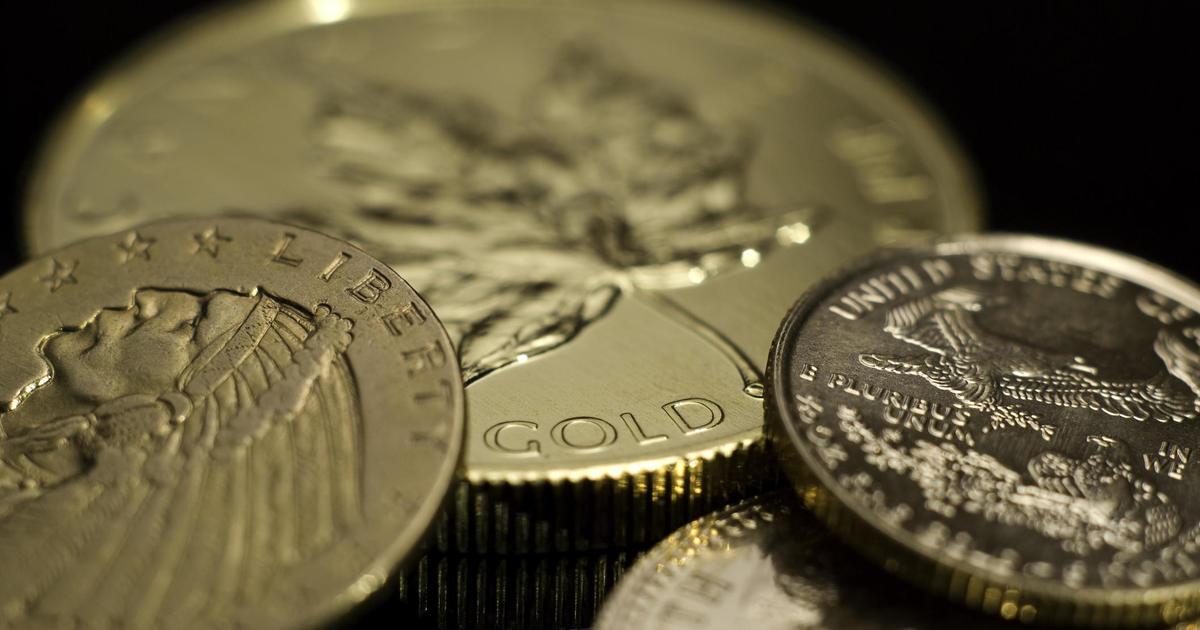CBS News
Here’s how the price of gold may rise in the next decade, according to experts

Getty Images/iStockphoto
Gold has multiple common uses. It’s a currency, a material used in jewelry and it’s a crucial component in manufacturing. Gold is also an investment vehicle – one that’s commonly used as a source of protection against inflation, market volatility and economic unrest.
If you have gold in your portfolio, or you’re thinking about adding some of the yellow metal to it, you’re probably wondering how much money an ounce of gold will be worth in the future. While there’s no crystal ball that can give you an exact figure of what gold might be worth in a decade, there are plenty of expert predictions to consider.
Add gold to your portfolio now to take advantage of potential price growth ahead.
Here’s how the price of gold may rise in the next decade
Vijay Marolia, money manager and managing partner at Regal Point Capital, expects the price of gold to be “at least” $3,000 an ounce in 10 years (the price of gold today is around $2,000 an ounce).
Marolia offered a thought experiment to show how the price of gold grows over time, saying “100 years ago, to purchase a custom tailored suit, a man would expect to pay around $20… Keep in mind that an ounce of gold was officially priced at $20.69.” He went on to explain that, “today, that same bespoke suit would cost upwards of $2,000; or the price of one ounce of gold.”
“Inflation and increased worldwide debt loads, all will raise the tide for commodities like precious metals,” explains Matt Willer, managing director and partner at Phoenix Capital Group. When asked to predict what the price of gold will be in 10 years, he said, “$3,800 is my call for 2034.”
“My answer to the gold question is quite simple,” says Mark Charnet, founder and CEO of American Prosperity Group. “If the appreciation of gold per ounce is just 7.2% per year, the price will be twice as much over today’s price in 10 years.” However, Charnet says, “no one has the crystal ball to be any more accurate.”
Expert opinions surrounding how much money an ounce of gold will cost in 10 years are all over the board. That’s because there’s no way to tell exactly how much the precious metal will be worth in the future. But they all seem to agree on one thing, the price of gold is likely headed up.
Don’t miss out on the gains experts are expecting in gold’s price. Add the precious metal to your portfolio today.
What factors cause movement in the price of gold?
If you plan on investing in gold, it’s a good idea to familiarize yourself with the factors that play a role in the movement of the commodity’s price. Here are some of the most important drivers of the price of gold:
- Inflation: “Let’s not forget that inflation plays a key role in demand for gold,” explains Marolia. “Central banks around the world are inflating their currencies,” which will likely lead to further increases in the price of gold.
- The dollar: “As we price gold in dollars, gold’s price will reflect the inverse of the trust in the U.S. dollar,” says Vijay. In other words, if trust in the dollar falls, the price of gold will likely rise.
- Demand: Demand is integral in the price of most assets, including gold. Growing demand for the precious metal can lead to increasing prices while prices may fall if demand wanes.
- Market and economic conditions: Gold has long been regarded as a safe-haven investment. As such, investors often flock to the precious metal as a way to keep their investments safe during times of market or economic uncertainty. This can cause the price of gold to climb.
- Geopolitical conditions: Geopolitical conflicts can wreak havoc on economies, the stock market and commodities markets – particularly those centered around oil, gas and other consumer staples. As such, investors often use gold as a way to maintain the value of their portfolios during times of geopolitical uncertainty.
The bottom line
There’s no way to know exactly how much an ounce of gold might cost 10 years from now. However, most experts predict that the price of the precious metal will be significantly higher in 2034 than it is today. Consider adding gold to your investment portfolio to make sure you don’t miss out on the gains many experts are expecting ahead.
CBS News
11/24: CBS Weekend News – CBS News

Watch CBS News
Be the first to know
Get browser notifications for breaking news, live events, and exclusive reporting.
CBS News
11/24/2024: Disrupter U.; Humans in the Loop; Lowriders of New Mexico

Watch CBS News
Be the first to know
Get browser notifications for breaking news, live events, and exclusive reporting.
CBS News
11/24: The Takeout: Sen. Joe Manchin

Watch CBS News
Be the first to know
Get browser notifications for breaking news, live events, and exclusive reporting.





